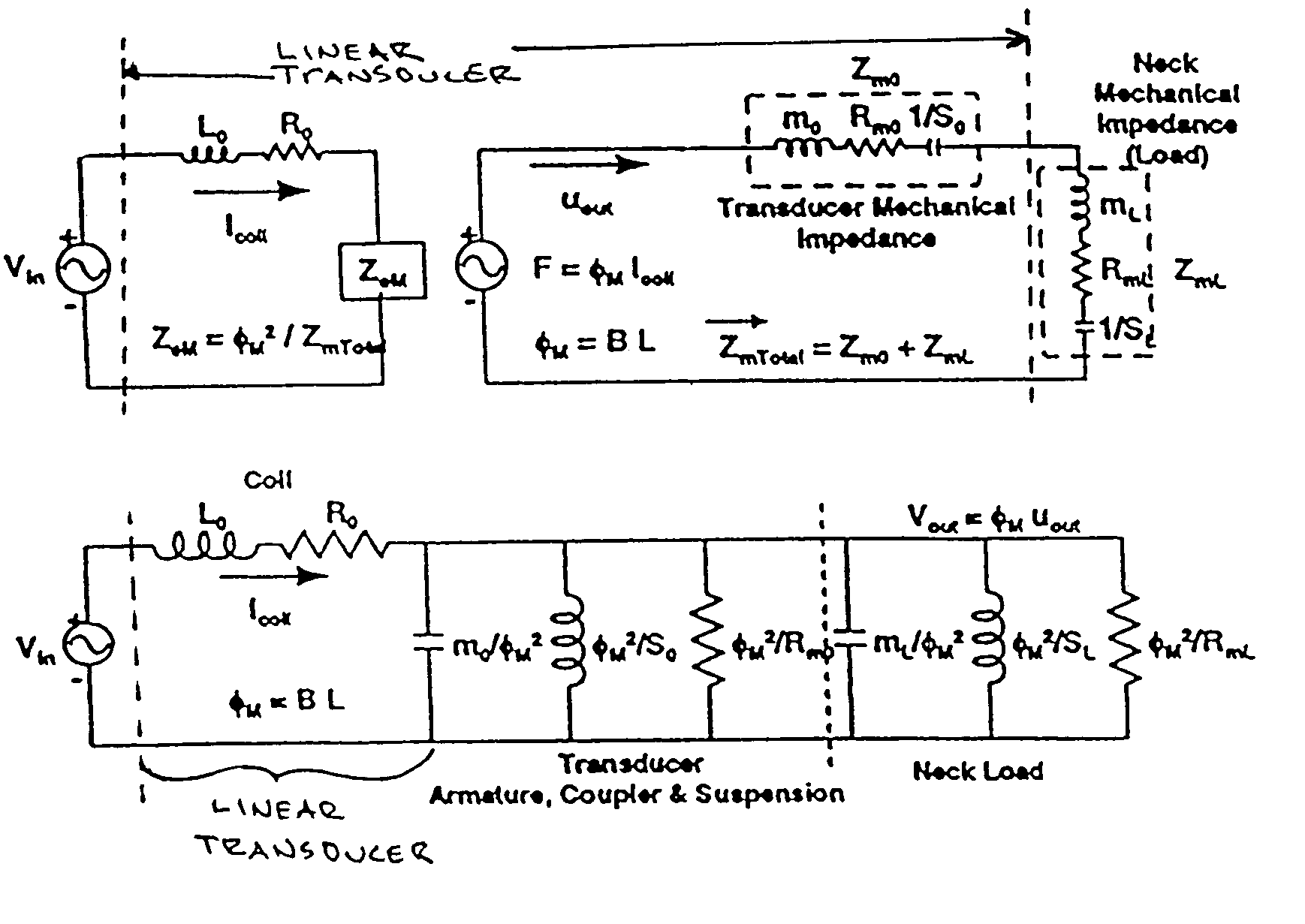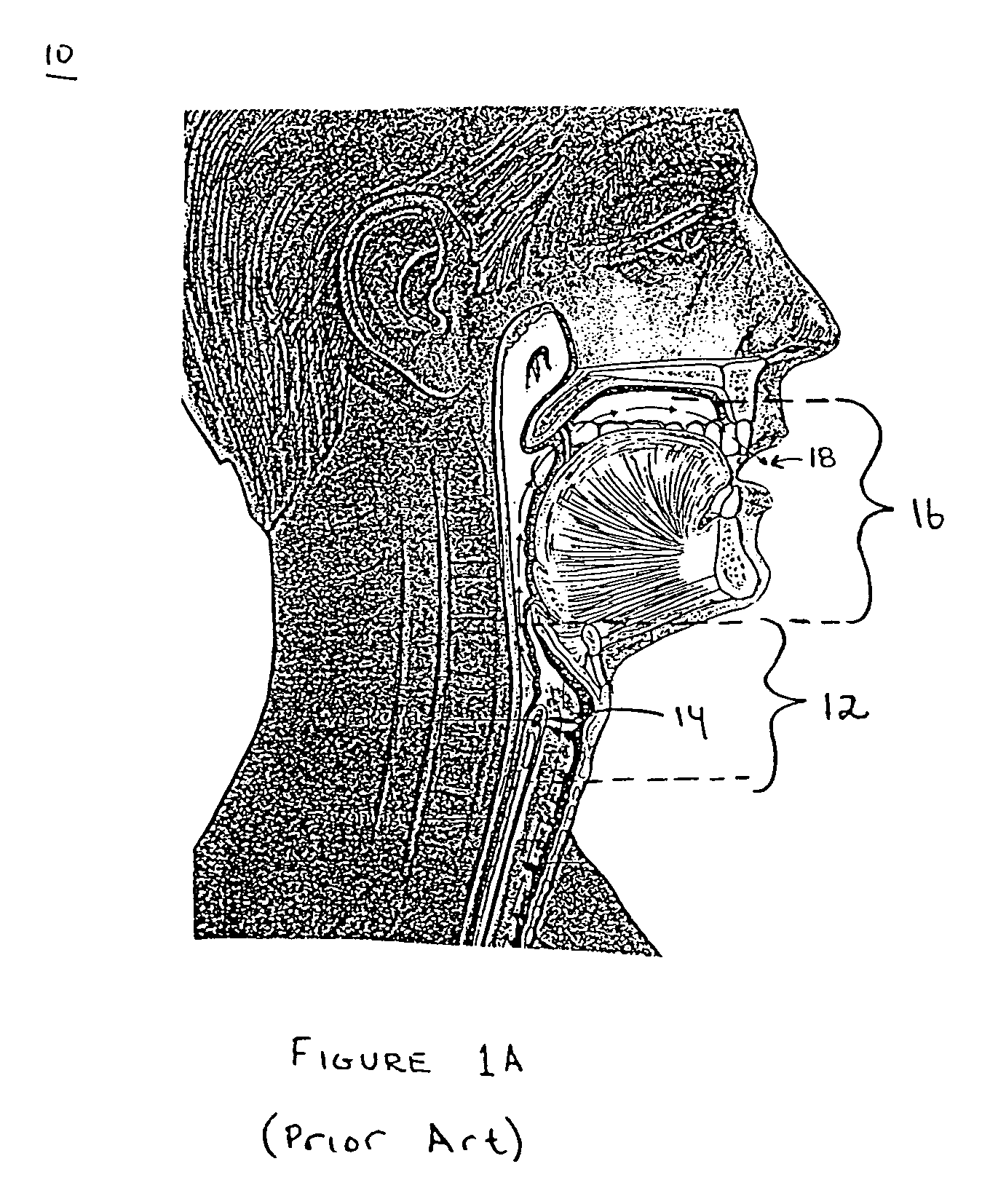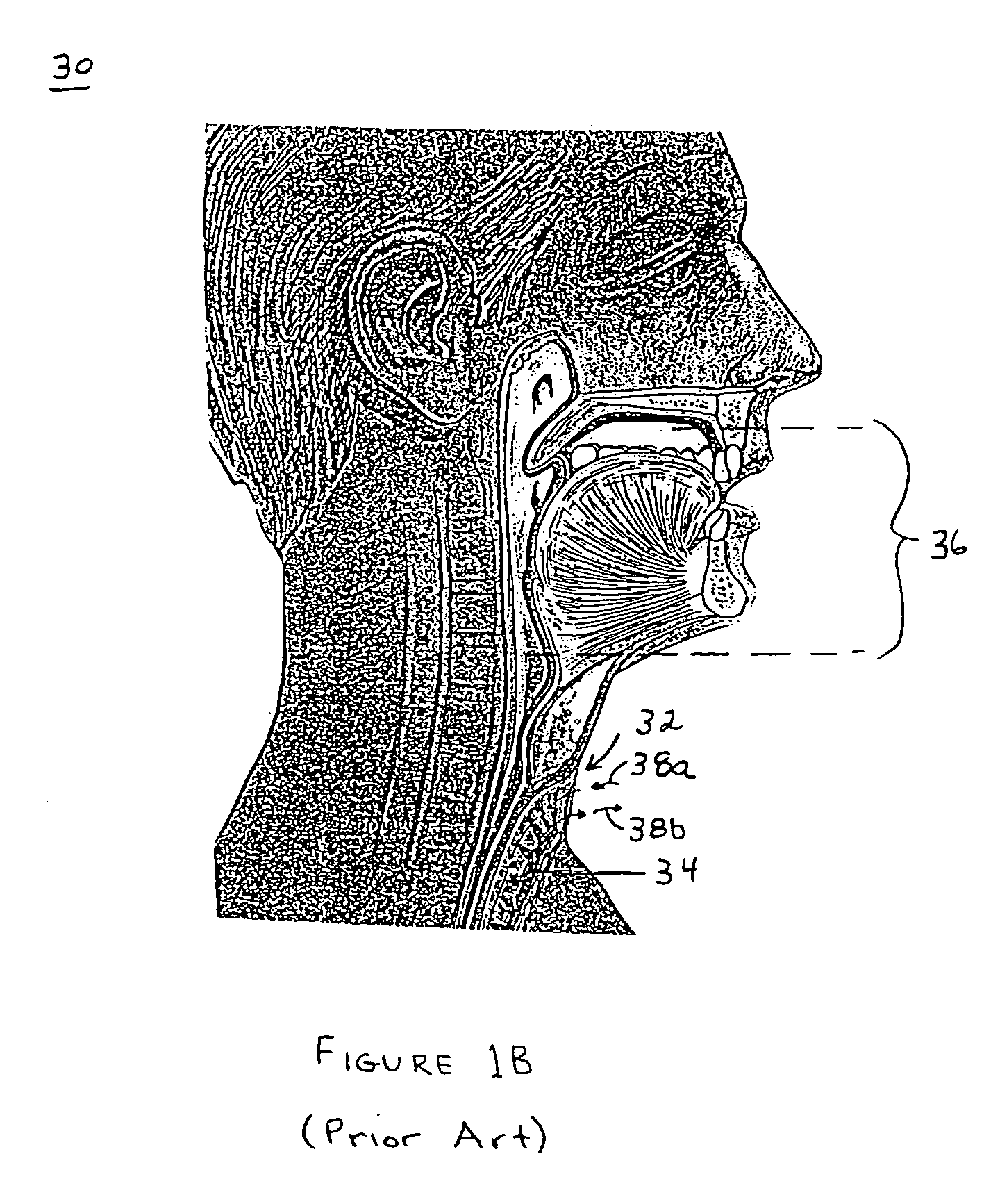Electro-larynx
a technology of larynx and lungs, applied in the field of larynx, can solve the problems of unnatural communication with others, poor speech sound quality, unnatural airflow from the lungs, etc., and achieve the effect of smoothing out any distortion, improving speech quality, and high degree of preservation of attributes
- Summary
- Abstract
- Description
- Claims
- Application Information
AI Technical Summary
Benefits of technology
Problems solved by technology
Method used
Image
Examples
Embodiment Construction
[0034]The present invention is an improved electro-larynx having a substantially linear transducer and / or an improved waveform generator. The improved electro-larynx is capable of setting up a sound wave in the pharynx of a user which closely resembles a normal glottal excitation. The waveform generator produces a relatively good synthesized approximation of a glottal source waveform, having a harmonic structure substantially similar to that of normal human speech. The linear transducer is highly responsive and preserves this harmonic structure by producing an output vibration which is a substantially linear function of the glottal source waveform produced by the waveform generator. The waveform generator may use glottal sample data preferably derived from actual voice data to form the wave sent to the transducer, such data having the effects of the vocal tract modulation compensated out. Consequently, the post transduction sound waves to be modulated by the vocal tract of the user ...
PUM
 Login to View More
Login to View More Abstract
Description
Claims
Application Information
 Login to View More
Login to View More - R&D
- Intellectual Property
- Life Sciences
- Materials
- Tech Scout
- Unparalleled Data Quality
- Higher Quality Content
- 60% Fewer Hallucinations
Browse by: Latest US Patents, China's latest patents, Technical Efficacy Thesaurus, Application Domain, Technology Topic, Popular Technical Reports.
© 2025 PatSnap. All rights reserved.Legal|Privacy policy|Modern Slavery Act Transparency Statement|Sitemap|About US| Contact US: help@patsnap.com



